Little Switzerland, Lynmouth in UK
Lynton and Lynmouth are a pair of quaint seaside villages on the North Devon coast of south west England. Lynton is perched on the hilltop at 500 feet above sea level and Lynmouth is located down by the sea. A while ago I wrote about my visit to Lynto and walking along the coast down to Lynmouth. This time, we're going to explore Lynmouth.
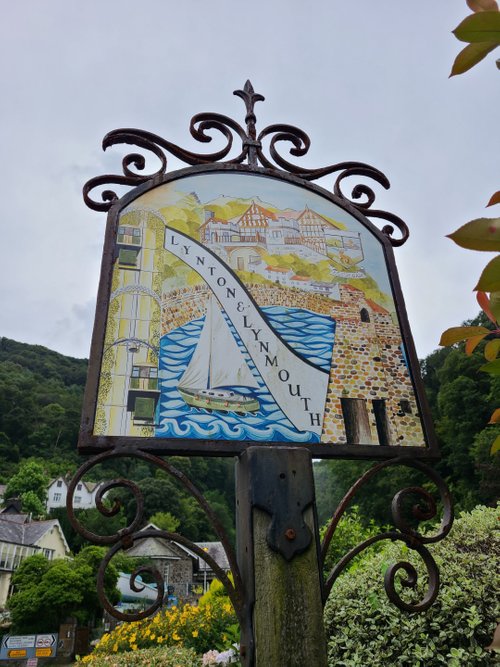
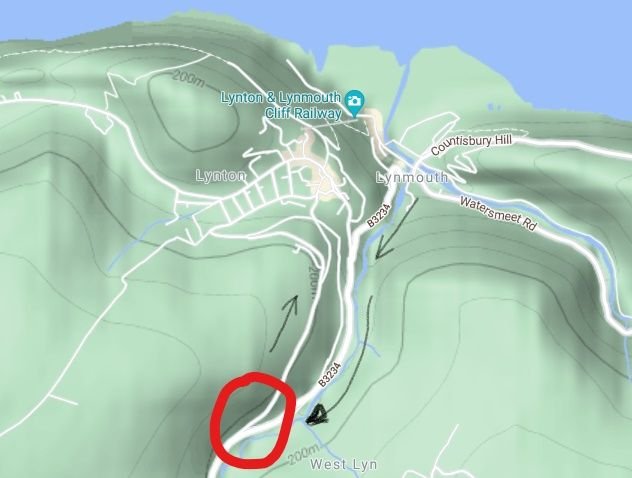
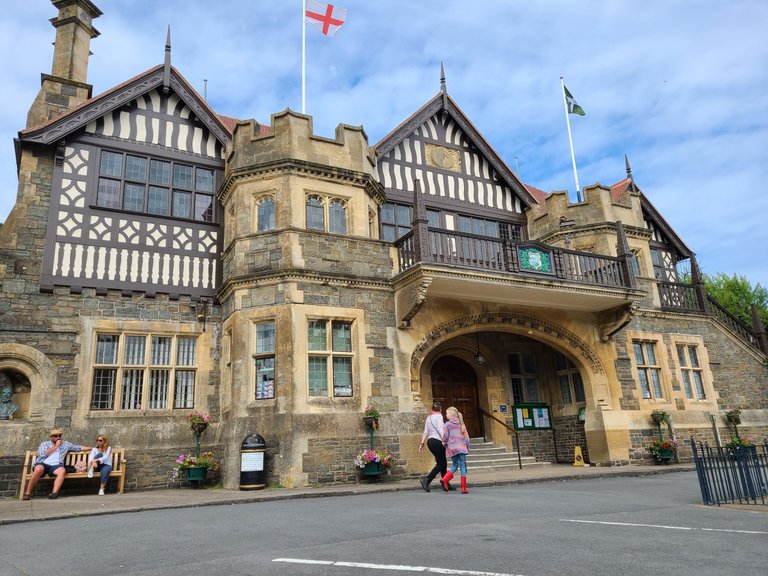
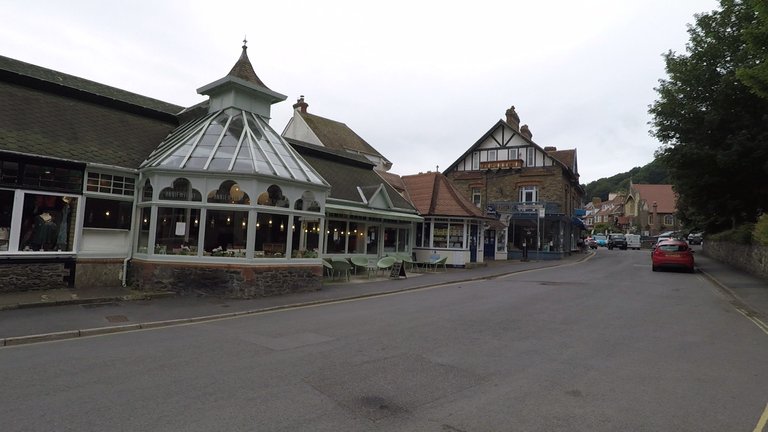
Little Switzerland
Lynmouth is a lot busier than Lynton, maybe because it is more accessible as visitors don't have to drive up that steep road. The area is also known as Little Switzerland, after the English poet Robert Southey visited in 1799 and remarked that it looked like Switzerland! What do you think?
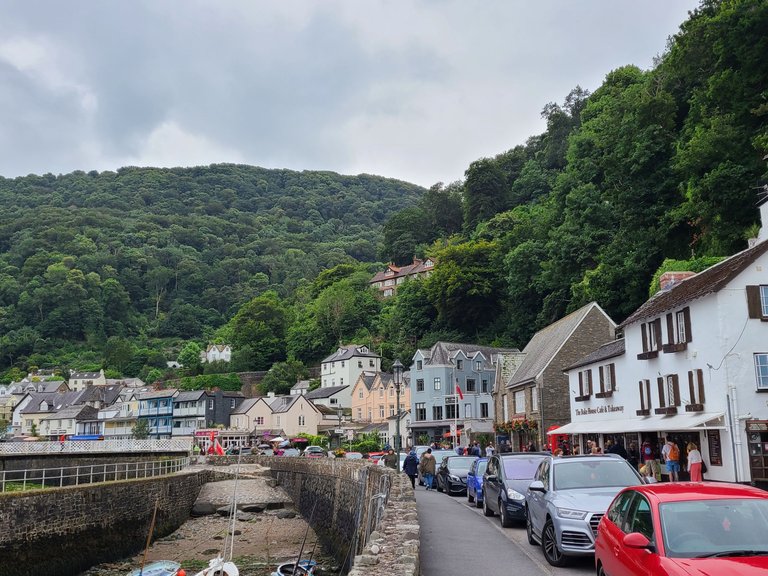
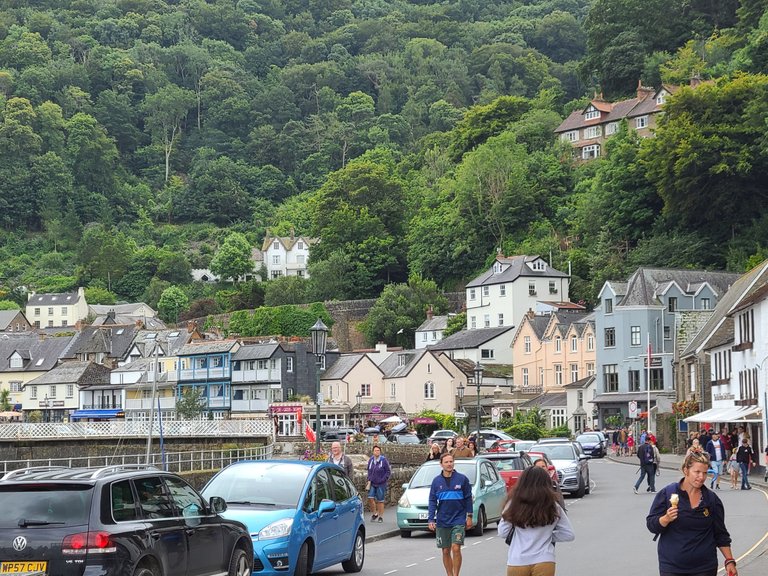
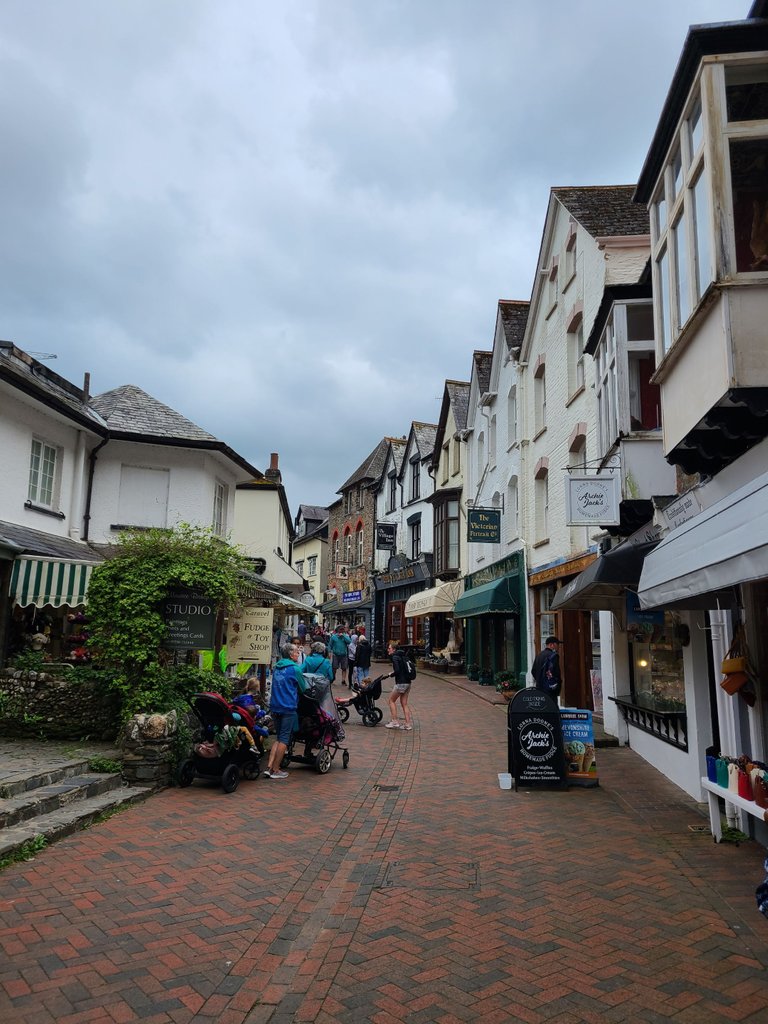
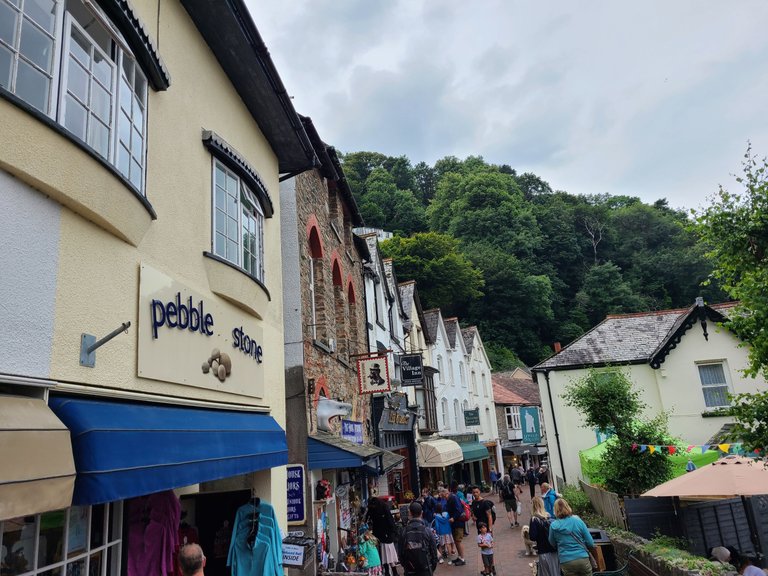
West Lyn River
In England, place names that end with 'mouth' (pronounced 'muff') are normally located by the mouth of a river. Lynmouth is located by the West Lyn River. The river is important to Lynmouth as it is an integral part of two of the most famous local landmarks which I'll show you in a minute.
This is the West Lyn River looking inland towards Lynmouth village
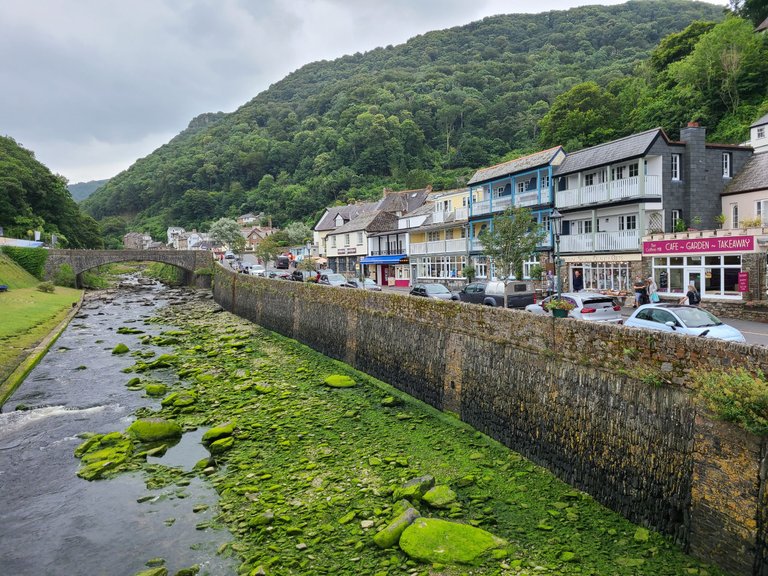
And this is looking north towards the sea. The West Lyn River ends here, entering into the Bristol Channel and then out into the Atlantic. Although I was standing right by the sea and it was quite a gloomy day, it wasn't windy at all. The whole area felt really calm and pleasant, no wonder it's such a popular place in the region.
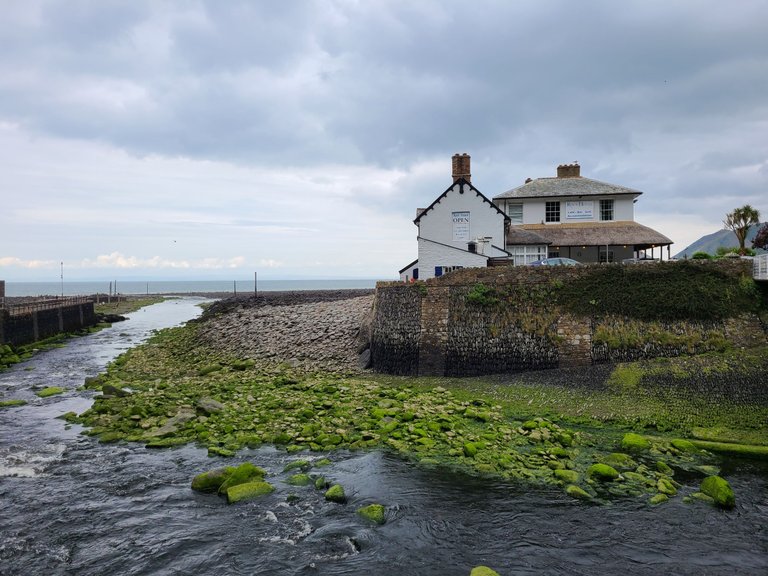
The same couldn't be said back on 15th August 1952, pretty much 69 years to the date as I'm writing this. On that day, Lynmouth suffered the worst flood in English history. It had been raining heavily for two weeks already, and during those 24 hours on 15th August, 9 inches of rain fell in the area. Much of the nearby regions were flooded and the water that fell in that one day would supply the water needs of Lynmouth’s total population for 108 years. The network of tributaries from the upstream rivers carried lots of water and rubble downstream, eventually meeting at Lynmouth. All this was too much for Lynmouth, and the West Lyn River rose by 60 feet flooding Lynmouth and killling 34 locals. Source
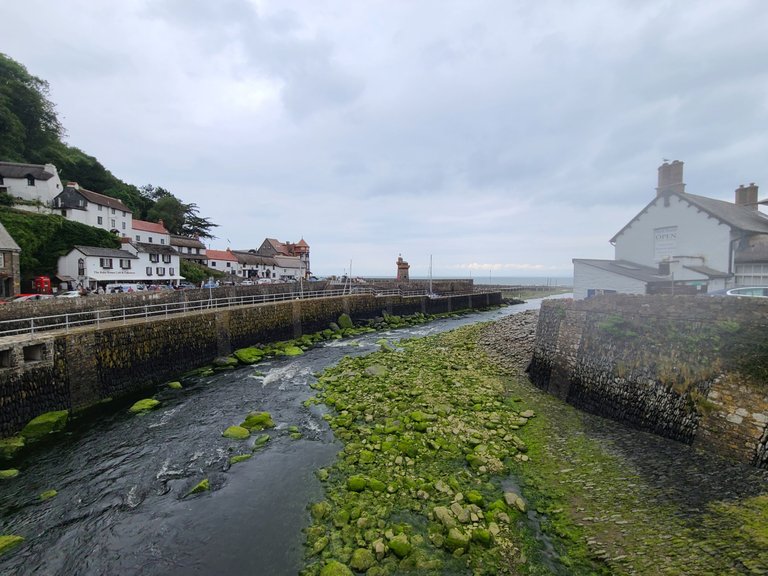
Glen Lyn Gorge
The 1952 flood was a tragic event for Lynmouth and there are various exhibitions in the village if you want to learn more this. One of the exhibition can be found inside the Glen Lyn Gorge. The gorge is a few minutes walk along the West Lyn River, and it meets the East Lyn River at this point. There's a £7 entry fee to see the gorge and the waterfall. I thought that was rather expensive so just took a few photos outside, especially of the massive water jet. I'd say this is the second most famous landmark in Lynmouth.
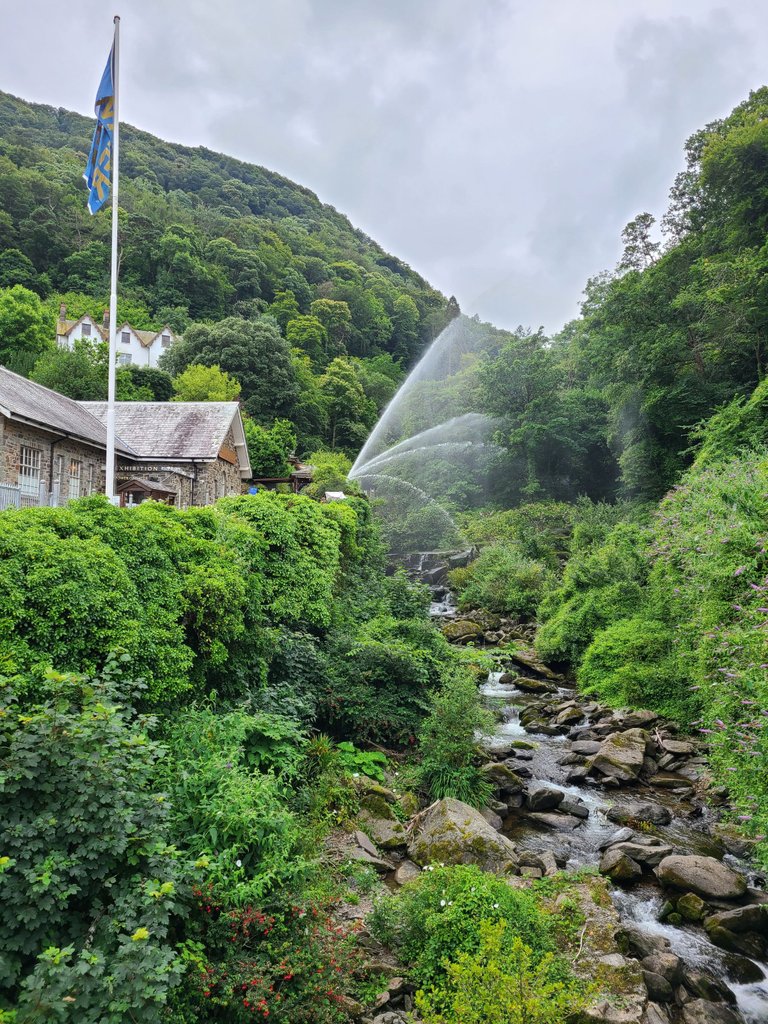
Cliff Railway
I knew you were going to ask? What's the most famous landmark in Lynmouth? 😀 Here we are....
Remember I mentioned earlier on the challenge of driving between Lynmouth and Lynton? It's not an issue for locals as they do it all the time, but for tourists, there's an alternative, and one that's absolutely worth doing. The Lynton and Lynmouth Cliff Railway connects the two villages via a cliff railway (duh!!!). Ok, that part didn't need an explanation. What you probably don't know is that the cliff railway is the worlds highest and steepest water powered railway, only one of three remaining in the world. The other two are in Braga, Portugal and Fribourg in Switzerland if you're interested.
Of course I wasn't going to miss the opportunity to take a ride, and at only cost £3 I would highly recommend it if you ever visit. Plus I had to get back up to Lynton after walking down via the coast walk.
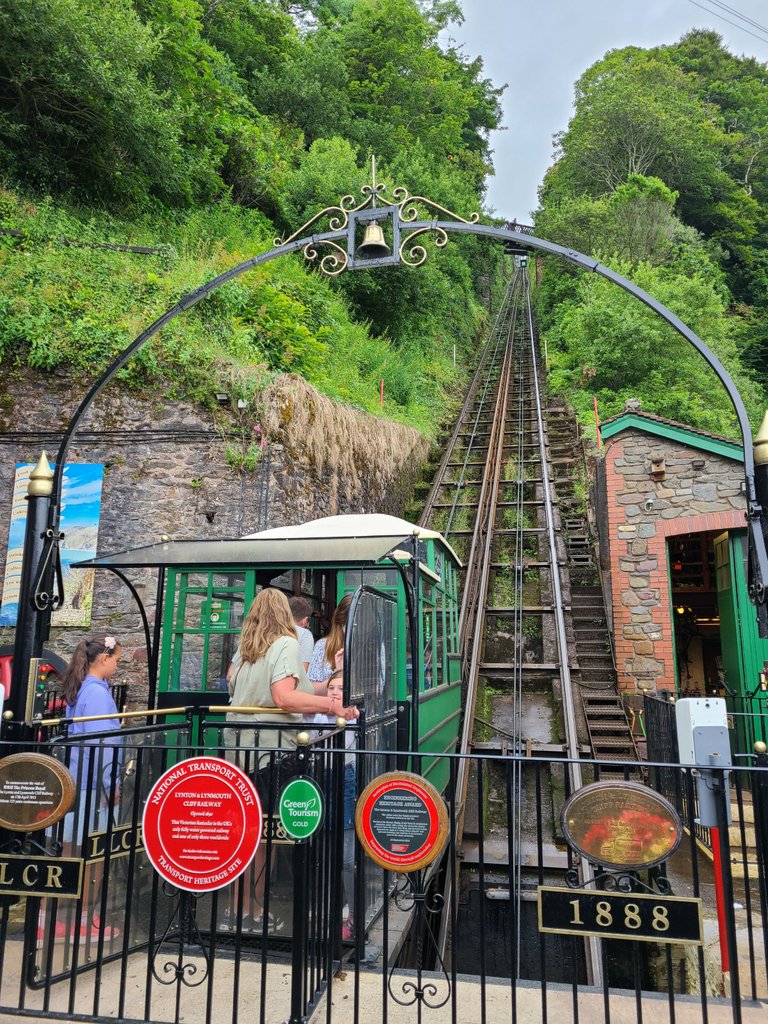
The cliff railway opened in 1890 and is powered entirely by water from the West Lyn River using a pulley system for the two trams. Each tram holds 700 gallons of water and the water helps to balance the weight of the two trams so the one coming down pulls the one going up. I waited about 15 minutes to get on the tram and was lucky enough to bag the oustide standing spot so I could get full view of the ride going up. It was as absolutely fascinating experience, like I was slowing reaching for the sky!
| Gradually ascending up the cliff | We meet the other tram going down at half way | Getting near the top of the cliff with a clear view of the coast |
|---|---|---|
 | 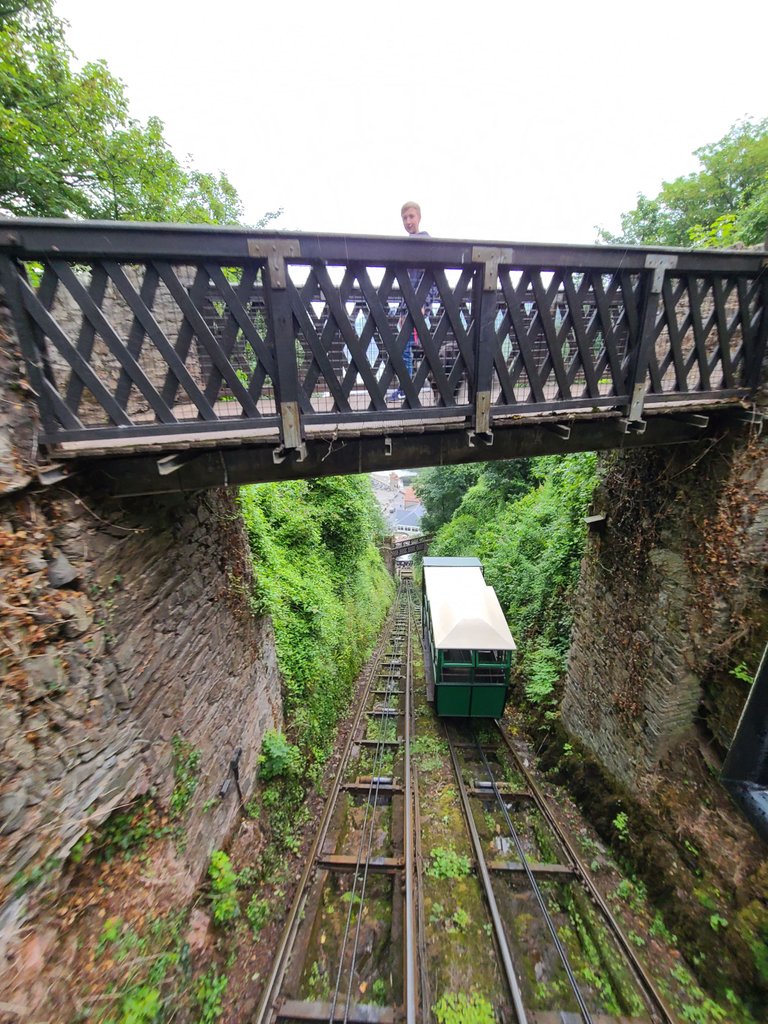 |  |
The whole rail track is about 900 feet long and rises some 500 feet, taking about two and a half minutes. It's just long enough to draw in the magnificent view, and experience this amazing piece of engineering that was so eco friendly from over a century ago.
A great way to round of my visit to the amazing villages of Lynton and Lynmouth.
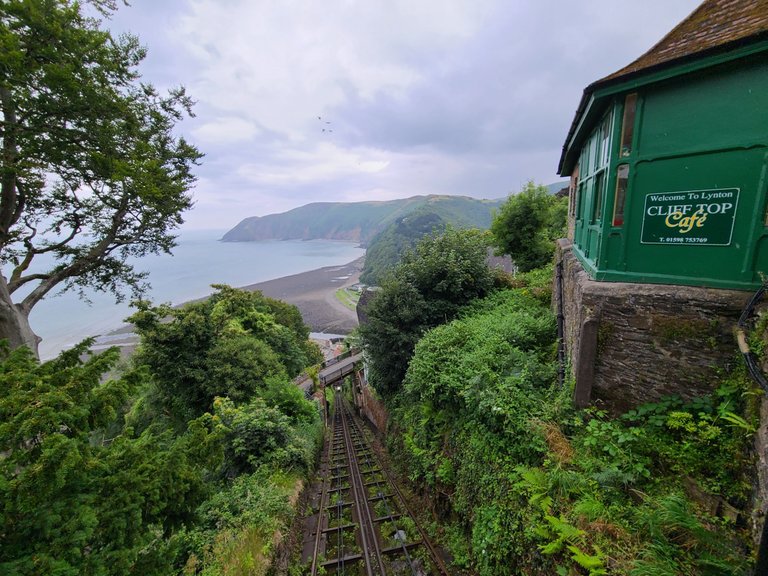
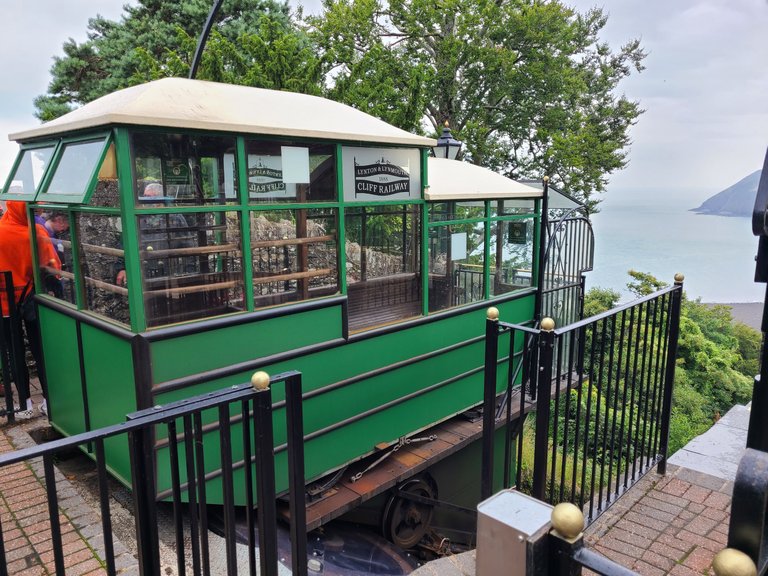


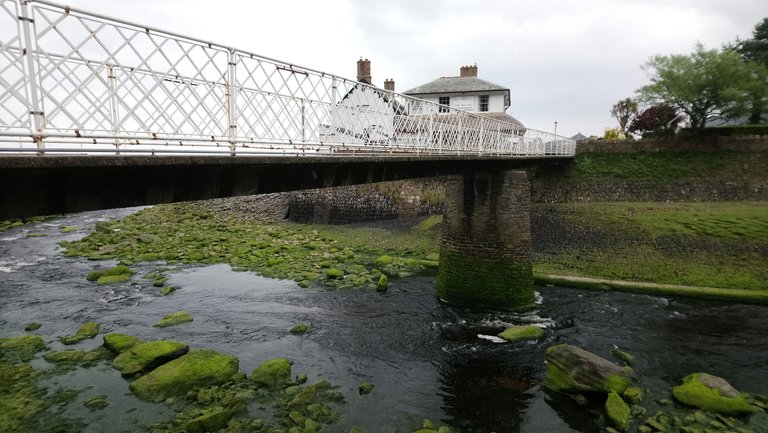
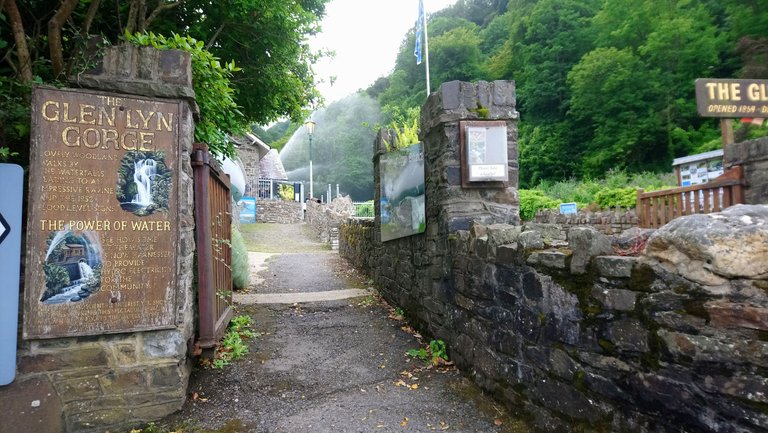
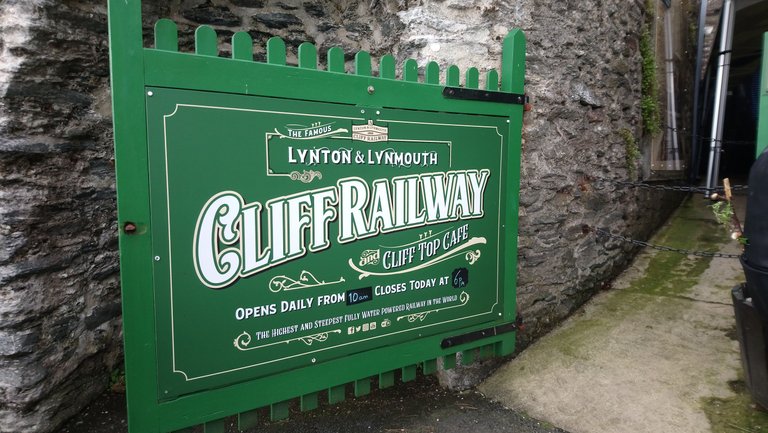

Congratulations, your post has been added to Pinmapple! 🎉🥳🍍
Did you know you have your own profile map?
And every post has their own map too!
Want to have your post on the map too?
Congratulations, your post has been added to Pinmapple! 🎉🥳🍍
Did you know you have your own profile map?
And every post has their own map too!
Want to have your post on the map too?
What a wonderful tour of such a beautiful place in the UK. I love those quaint shops.
Great photos.
Thanks @farm-mom and apologies for the delay in responding, don't know why I forgot about this post😌
Hiya, @ybanezkim26 here, just swinging by to let you know that this post made it into our Honorable Mentions in Daily Travel Digest #1295.
Your post has been manually curated by the @pinmapple team. If you like what we're doing, please drop by to check out all the rest of today's great posts and consider supporting other authors like yourself and us so we can keep the project going!
Become part of our travel community:
That driving experience does sound like Switzerland:
Steep incline ✔
Narrow road ✔
Hairpin turns ✔
The only thing that you're missing is the fog, which is actually the clouds over the road, that make it difficult to see more than 15 feet in front of you. Lol
That town looks nice. I love charming little villages. 3£ for that rail ride is very reasonable. How was the wait time? Was there a long line or was it alright? I'm impatient - I hate waiting lol
I thought I responded to all the comments on this post.... maybe I'm growing old.
The wait was around 15 minutes so it wasn't that bad. Originally we were going to catch the tram immediately after we came down from the cliff walk, but the queue was really long that's why we wandered around for a while. I reckon if we hadn't it would have been well over half an hour wait. £3 was definitely a bargain!!
Love the history and the photos! The cliff railway looks like a fun ride with a great view. 😀
We're so lucky we bagged the outside spot and took a video of the whole trip coming up. It was really awesome
Very quaint town, love the old funicular systems!
Looks a little like Switzerland I suppose, in a British kinda way, lovely interesting trip you had going there!
Thanks for you comment Joan, and apologies for the delay in resonding!!!
Congratulations @livinguktaiwan! You have completed the following achievement on the Hive blockchain and have been rewarded with new badge(s) :
Your next target is to reach 32000 upvotes.
You can view your badges on your board and compare yourself to others in the Ranking
If you no longer want to receive notifications, reply to this comment with the word
STOPI am curious about the drive. I am one who gets scared driving across narrow roads lined with steep ravines and sharp turns. It makes me weak in the knees. I usually pull over and let someone else take over the wheel, haha, but the views up there are surely worth it.
Great post! I've just posted my own pics of the walk between Valley of Rock and Lynmouth, before seeing your post (not trying to compete I promise!) The Gorge is on my todo list, my 7 year old would love to go. Last time I went I drove up the hill between Lynmouth and Lynton stuck behind two cyclists, spluttering up in first gear, all part of the experience!
Oh no!!! I would have really shxtted myself if I had to follow the cyclists up that road, I'd be worry rolling back down, definitely not something I want to experience 😫. It's bad enough going uphill and have to avoid oncoming traffic
Hi @livinguktaiwan,
Thank you for participating in the #teamuk curated tag. We have upvoted your quality content.
For more information visit our discord https://discord.gg/8CVx2Am